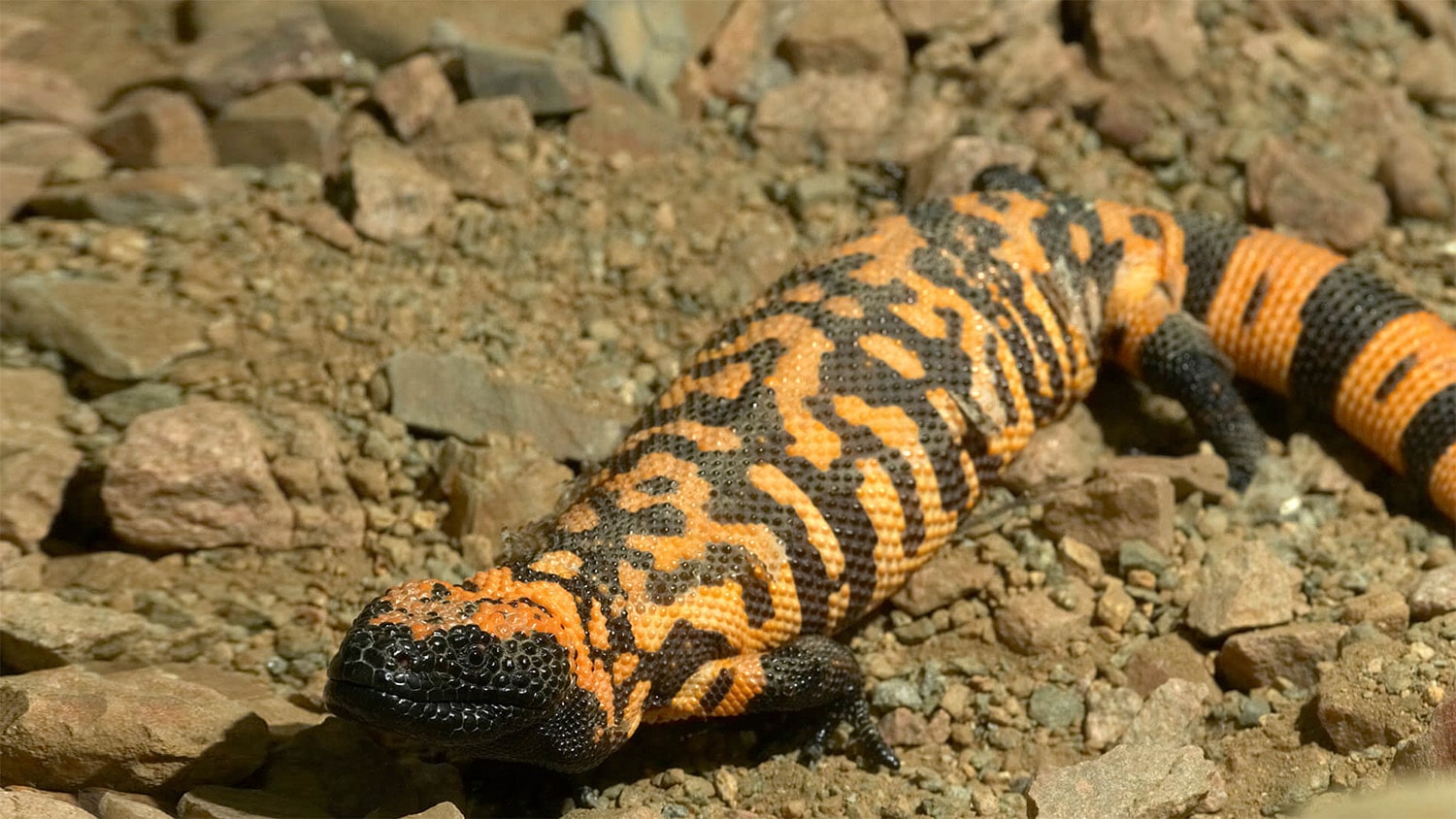
28 interesting facts about Gila monsters
- 👁️ 263
Gila monsters are one of the most fascinating creatures in the animal kingdom, known for their striking appearance and unique biological characteristics. As one of only a few venomous lizard species in the world, they have intrigued scientists and wildlife enthusiasts alike. Native to the southwestern United States and northwestern Mexico, these reclusive creatures prefer arid and semi-arid environments, where they lead relatively solitary lives. Despite their fearsome reputation, Gila monsters are slow-moving and pose little threat to humans unless provoked. Let’s delve into some interesting and informative facts about Gila monsters that highlight their significance in the natural world.
- Gila monsters (Heloderma suspectum) are one of only two venomous lizard species found in North America, the other being the Mexican beaded lizard.
- They can grow up to 2 feet (about 60 centimeters) in length, making them the largest native lizard species in the United States.
- The venom of a Gila monster is produced in glands in the lower jaw and is delivered to its prey through grooves in the teeth rather than through fangs.
- Gila monsters have a distinct black and pink or orange bead-like pattern on their skin, which serves as a warning to potential predators.
- They are named after the Gila River Basin in Arizona, where they were first discovered.
- Gila monsters are protected by law in Arizona and Nevada due to declining populations, making it illegal to kill, capture, or harass them.
- They spend up to 95% of their time underground in burrows, emerging primarily to feed or mate.
- The diet of Gila monsters primarily consists of eggs, small birds, mammals, frogs, insects, and carrion.
- They have a highly efficient metabolism and can eat up to one-third of their body weight in one meal.
- Gila monsters are capable of storing fat in their tails, which they can metabolize during periods of food scarcity.
- Their venom contains a complex cocktail of components, some of which have been studied for potential medical applications, including the treatment of diabetes.
- Gila monsters mate in the spring, and females lay their eggs in the summer. The eggs incubate for approximately nine months before hatching.
- Despite their venomous bite, Gila monsters are relatively slow-moving and rely on their camouflage and warning coloration for defense.
- The lifespan of a Gila monster in the wild is estimated to be 20 to 30 years, but they can live longer in captivity.
- They are most active during the morning and evening hours to avoid the extreme heat of their desert habitat.
- Gila monsters have a forked tongue, which they use to sense chemicals in the air, aiding in the detection of prey and other Gila monsters.
- Their venom has been found to have analgesic (pain-relieving) properties, sparking interest in pharmaceutical research.
- The bite of a Gila monster is not usually fatal to humans, but it can cause significant pain, swelling, and illness.
- They are known to have a strong homing instinct, capable of finding their way back to their burrows from considerable distances.
- Historically, Gila monsters were unfairly demonized in folklore and myths as being more dangerous than they actually are.
- The bumpy texture of their skin has inspired biomimicry research, including the development of surfaces that reduce bacterial growth.
- Gila monsters are oviparous, meaning they lay eggs that hatch outside the mother’s body.
- In the cooler months, Gila monsters enter a state of brumation, a form of hibernation specific to reptiles, to conserve energy.
- Their thick skin and scales help minimize water loss, an adaptation crucial for survival in arid environments.
- Baby Gila monsters are independent from birth and receive no parental care after hatching.
- The presence of Gila monsters is often an indicator of a healthy ecosystem in their native desert habitats.
- Gila monsters have been featured in numerous cultural references, including in the names of sports teams and in popular media.
- Despite their venomous nature, Gila monsters avoid confrontation and will typically flee rather than fight when threatened.
Gila monsters are remarkable survivors of the desert, equipped with fascinating adaptations that have enabled them to thrive in harsh environments. Their unique biology, venomous bite, and contribution to medical research make them an invaluable part of biodiversity. As protected species, it is crucial to continue conservation efforts to ensure their survival for future generations. Through understanding and respecting these extraordinary creatures, we can appreciate the complexity and beauty of the natural world.
Gila monsters are one of the most fascinating creatures in the animal kingdom, known for their striking appearance and unique biological characteristics. As one of only a few venomous lizard species in the world, they have intrigued scientists and wildlife enthusiasts alike. Native to the southwestern United States and northwestern…